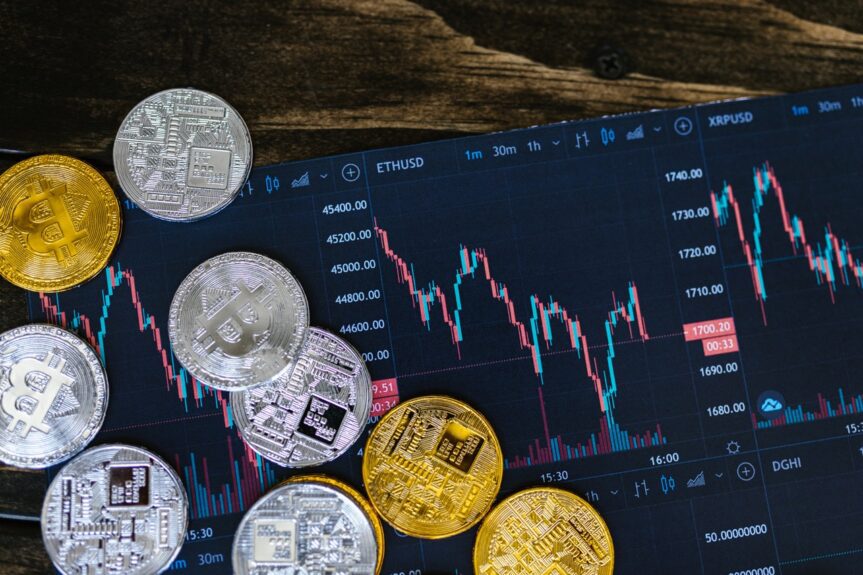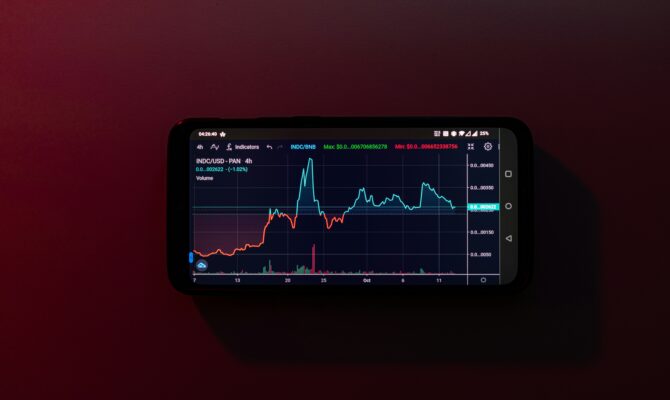
A cryptocurrency can’t drop below zero. Theoretically, this means you can’t lose more than you invest. This is mostly true for those that use a HODL strategy (buy and hold). Since crypto can’t drop into negative numbers, the only money lost besides the investment is what was spent on fees. However, crypto investing strategies can leave investors burned beyond their initial investment.
You can’t lose more than you invested in cryptocurrency, aside from fees, when using a buy and hold strategy. However, those that borrow money (margin) to invest can lose more than they originally put in. These losses can be magnified if the investment strategy is riskier, such as arbitrage trading or short-selling.
The general advice with crypto (and any investment!) is never to invest what you can’t afford to lose. The crash of the cryptocurrency LUNA in May 2022 brought this gut-punch of a lesson home to many first-time investors. Of course, the crypto market has its ups and downs, and while many have had success, there are always risks. But for, those that choose to play high-stakes games, they could lose more money than your average investor.
At DWG, we see Bitcoin as a unique investment opportunity, as it is set up to become the scarcest asset on the planet. As a result, the cryptocurrency is ideally positioned for a HODL (buy and hold) strategy. This longer-term method of investing in the crypto market removes investors from making impulsive (usually wrong) decisions as the market rises and falls or trying to jump on board a baseless trend.
However, the HODL strategy isn’t typically a fast money maker. There is no investment or business strategy in life, that is. Nor is the strategy a high-adrenaline game. In short, HODL-ing is the little black dress of crypto investments: classic and tasteful but lacks the fresh “wow” factor. This is why some investors get ‘bored’ and use other, mostly riskier, strategies. For a select few, these strategies have led to great success. However, most lost big: even more than the original investment they made since they combined the strategy with leverage/margin/debt.
Arbitrage trading or ‘Arbs’ is an investment strategy aiming to take advantage of the discrepancies in crypto prices on different exchanges. In simple terms, arbitrage works by buying a cryptocurrency at one exchange, reselling it on a different exchange at a higher price, and pocketing the difference. Due to the decentralized nature of crypto, there is not a single source for a price of an asset. For example, on one exchange, the price of BTC might be $31,000; on another, it might be $ 31,025. If you bought on the first exchange, managed to transfer it to the second one, and sold it, you’d pocket 0.08% (before fees). This might not sound like a lot, but when you use leverage (borrowing), the potential gains (and losses) grows.
Some people have used arbitrage very successfully. For example, Sydney’s own Clint Maddock, Dan Nicolaides, and their colleagues always exploit arbitrage anomalies in the crypto market. As a result, there are trades they have made which saw 40% returns in less than a month. However, it’s important to note that this is a case of ‘Survivorship Bias,’ where we only hear the story of Clint and Dan and their success, but we fail to consider the many more people who lost all their money doing the same thing. For every one Clint, there are probably 100 people who lost everything.
Also, Clint and Dan are not doing this on your basic PC, with many open tabs and a calculator. Instead, they use powerful computers, servers, and custom-made algorithms to help them track opportunities and allow them to move quickly. They also have ample capital to take full advantage of these price discrepancies so that fees and taxes don’t ruin their profit.
Those using smaller amounts of funds in arbitrage trading can find what little profit they made was gobbled up by the exchanges that charge fees when you buy and then when you sell. Then slap some taxes on top, and even a successful deal adds little to no wealth, or even worse, a positive return trade might even be a new loss after fees and taxes.
To make matters worse, in a volatile market where transactions can be slow, exchange prices can shift dramatically between buying and selling, making the sale pointless. If the money involved in this strategy is your own and the value of the cryptocurrency plunges, you at least have the option to hold the coin and wait for prices to rise again.
However, if an investor tried arb-trading this during the LUNA crypto crash debacle, they would probably have closed the trade with zero. They would have lost even more than their initial capital if they used leverage.
Could it have been even worse? Yes, things can always get worse. If the same investor above used their credit card to arb-trade LUNA and assumed it was low risk because they planned to buy and sell on the same day and if the exchange was slow or a block occurred, they could have gotten trapped during the crash. Then they haven’t just lost the money they invested and the fees but will have also been on the hook for the credit card debt.
Ouch.
But that’s still less of a kick to the bank balance than what another high-risk investing strategy called ‘shorting’ can do.
Shorting is when a bet is made that a cryptocurrency will fall in price. Why is this risky? Well, as we’ve explained before, cryptocurrencies have been known to rise in price in a very short time, and they don’t always come straight back down. This can lead an investor to lose a lot more than they invested.
When shorting, a cryptocurrency is borrowed from an exchange for a specified time. The crypto must be returned when that period is over, usually with a small lending fee. The idea is to borrow the crypto, immediately sell it back to the exchange, wait for the price to drop, and then repurchase it at the lower price and pocket the difference. So, in a nutshell, when shorting a currency, the idea is to sell it high and then repurchase it low. So, the investor returns the coins but has pocketed the difference in value from the day they were borrowed to the day they were returned. If this sounds complicated, you can read more about shorting here. We would be remiss, not to mention a basic investing rule here, don’t invest in something you don’t understand; it rarely works.
Continuing with our shoring story, the major problem that makes it so risky is that there is no limit to how high a cryptocurrency can rise. Therefore, somebody who is shorting can wind up owing a lot more than they owe.
For example, let’s say somebody believed a cryptocurrency currently valued at $200 per coin would drop to just $1. They would borrow ten coins and sell them all for $2,000 ($200 x 10coins). Then they wait, hoping for the price to drop, repurchase those coins for $10 ($1 x 10 coins), pocketing $1,990 minus fees. Great right? Not so fast.
Now let’s flip this scenario. Let’s say the coin that was $200 shot up to $500 per coin instead of going down. Now the investor is in trouble and waits and waits, but time is not on their side, and neither is the leverage used to borrow from the exchange, and the high price sticks. Now the investor must return the coins to the exchange. The only way to return them is for the investor to repurchase them at 500 dollars per coin. So now, the investor must pay $5,000 plus fees to return the borrowed ten coins.
In the above scenario, the investor has now lost $3,000 plus fees. That is a thousand more dollars than they’d have lost if they’d risked buying the ten coins outright and the currency plunged to zero. We’ve also not discussed auto-liquidation and other factors beyond this article’s scope. Suffice it to say; this is risky business.
High-risk crypto strategies come with higher losses. Investing money that isn’t yours can be costly, regardless if you borrowed the crypto from an exchange or used a credit card. Therefore, the safest strategy is to invest your own money and only amounts you can afford to lose. If you do that, you can’t lose more than you’ve invested.

It’s no secret we’re in a bear market right now. But while we're waiting for bullish movement, we don’t have…

We’ve all been hearing it, so let’s tackle the question on everyone’s mind: Is this cycle different? There’s a lot…

Today we’re diving deep into the world of the PulseChain ecosystem. I’ll be going over the background, sharing expert perspectives,…
Register for the FREE 90 minute
Crypto Training